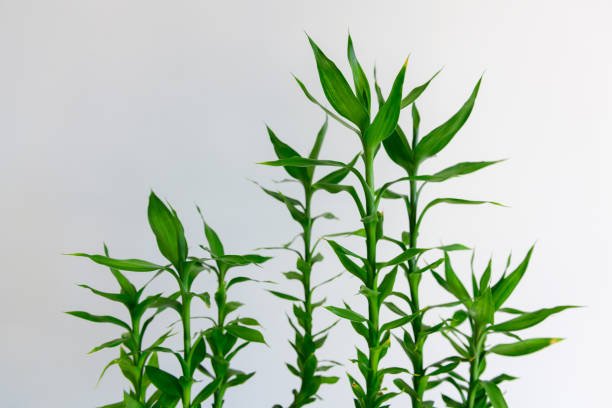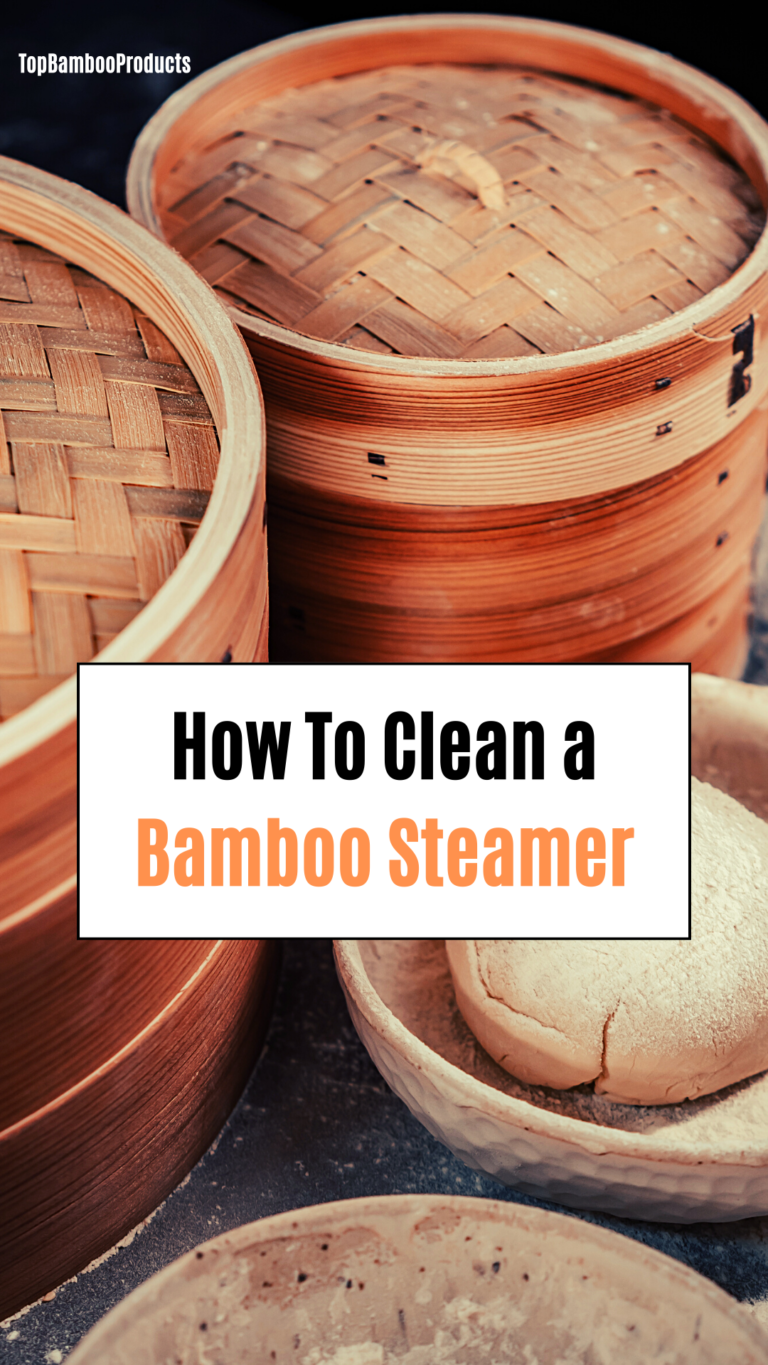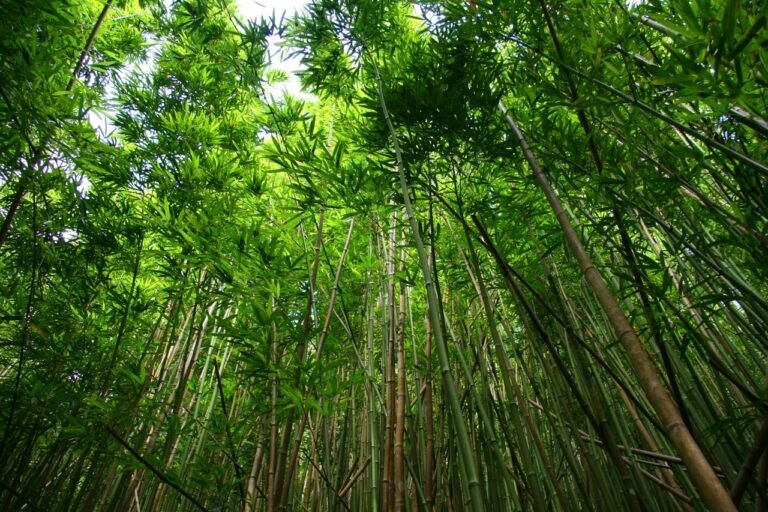Plants that Bear Resemblance, to the Elegant Bamboos; Similarities, in Appearance

0Shares
Plants resembling bamboo have a captivating charm and a calming atmosphere. These plants, which imitate the look of bamboo bring a touch to any space creating a feeling of peace and a connection, to nature. With their stems and vibrant foliage, they combine simplicity and elegance in a harmonious way. Whether placed indoors or outdoors these remarkable flowers enhance the beauty of gardens, homes, and landscapes.
Plants similar to bamboo offer a versatile and low-maintenance option, for those seeking to incorporate Asian-inspired sophistication or tropical allure into their surroundings. Embracing the allure of these plants allows us to appreciate the timeless appeal of bamboo while also benefiting from adaptability and sustainability.
Plants with Bamboo-Like Characteristics
The structure and arrangement of the leaves

Plants resembling bamboo have a charm due, to their leaf structure and arrangement. The leaves are. Taper to pointed tips, closely resembling bamboo foliage. When these leaves are arranged along the stems they create a pattern of lines and textures that enhance the visual appeal of these plants. This arrangement not only contributes to their beauty but also helps them efficiently capture sunlight highlighting their versatility and smart design.
Read More:
- Plants that Bear Resemblance, to the Elegant Bamboos; Similarities, in Appearance
- How To Water Bamboo In Pots? Making Your Potted Plant Thrive
- Mastering the Best Time to Plant Bamboo for an Optimal Growth
- Sustainable Construction: Benefits of Bamboo As Building Material
- What Are The Different Ways To Use Bamboo In Interior Design?
Plants resembling bamboo have growth patterns from clusters to elegant curves. Their heights can vary from feet to meters depending on the species and climate. Certain species stay small making them perfect for container gardening. Meanwhile, others can grow impressively tall adding drama and vertical interest to spaces. This variety, in growth habits allows for a multitude of landscaping options that cater to preferences and areas.
Stems that resemble culms
Plants, with stems that resemble bamboo are often called bamboo plants. These stems have an slender shape, to real bamboo culms. They also have nodes that add to the resemblance. Some of these stems even have an interior, which further enhances the similarity. This mimicry gives these plants an appealing look that easily catches our attention. Because of this feature they are widely used in landscaping purposes showcasing the allure of bamboo, in different settings.
Top 10 Bamboo-Looking Plants
Japanese knotweed (Fallopia japonica)
The Japanese knotweed (Fallopia japonica) is an invasive plant native to East Asia. It features heart-shaped leaves and clusters of creamy-white flowers and is known for its quick growth and sturdiness. Despite its appealing look, Japanese Knotweed poses a severe danger to native ecosystems and structures due to its large root system, which can cause foundation and infrastructure damage. Eradication efforts are difficult because to its tenacity. Management techniques are essential for preventing its expansion and protecting native plant populations from its invasive effects.
Heavenly Bamboo (Nandina domestica)
Heavenly Bamboo (Nandina domestica) is an attractive shrub native to East Asia. Despite its name, this plant is not a true bamboo but is known for its delicate leaf and bamboo-like growth habit. It has vivid red berries and exquisite compound leaves that change color as the seasons change, bringing visual interest to gardens. However, it has the potential to become invasive in some areas. To enjoy its beauty while limiting any ecological problems induced by its proliferation, careful planting and management are recommended.
Nandina (Nandina domestica)
Nandina (Nandina domestica), often known as Heavenly Bamboo, is an East Asian ornamental shrub. It is prized for its bamboo-like look, exquisite compound leaves, and year-round color variations. Nandina has bright red berries that stand out against the green foliage. It is not a real bamboo, despite its name, but rather a member of the Berberidaceae family. While it is regarded for its aesthetic appeal, it must be used with caution due to its potential invasive tendencies in specific areas. Proper planting and care assist to balance its beauty with potential environmental issues.
Switchgrass (Panicum virgatum)
Switchgrass (Panicum virgatum) is a natural grass species of North America that is prized for its ecological and practical contributions. With its erect growth and fluffy seed heads, it provides texture and movement to landscapes. Switchgrass is also important for soil conservation, erosion management, and wildlife habitat. It is a versatile plant that can be used as feed for animals and as a possible biofuel source. Its versatility, low maintenance, and environmental benefits have made it a popular choice for sustainable landscaping and conservation projects.
River Cane (Arundinaria gigantea)
River Cane (Arundinaria gigantea) is a spectacular natural bamboo species in North America. It develops thick colonies around streams, providing critical habitat for wildlife. It helps to the biodiversity of riparian areas by its tall, graceful culms and delicate foliage. River Cane has historically been important to indigenous civilizations and has been used for a variety of reasons ranging from crafting to construction. Despite challenges from habitat loss, conservation efforts are underway to protect this valued plant and its critical role in supporting local ecosystems.
Giant Reed (Arundo donax)

Giant Reed (Arundo donax) is a remarkable tall perennial grass. It is a Mediterranean native with sturdy stems and fluffy flower heads. Despite its decorative value, Giant Reed is an invasive plant that can destroy local ecosystems. It spreads quickly, outcompeting native plants and causing habitat disruption. While it has been utilized for a variety of reasons in the past, including thatching and musical instruments, its invasiveness has raised concerns, and control methods are frequently required to avoid its expansion and ecological impact.
Horsetail (Equisetum hyemale)
Horsetail (Equisetum hyemale) is a unique and old plant that resembles a living fossil. Its distinctive appearance is made up of jointed, hollow stems that resemble a horse’s tail. Because of its architectural appeal, horsetail is frequently employed in decorative landscaping. However, because of its aggressive spreading behaviors and invasive characteristics in particular situations, it must be carefully controlled. The hardiness and unique form of this prehistoric plant make it a captivating addition to gardens, but careful management is required to avoid unintended ecological repercussions.
Fountain Bamboo (Fargesia spp.)
Fountain Bamboo (Fargesia spp.) is a non-invasive bamboo type known for its elegant, cascading growth. Fountain Bamboo, unlike some bamboo species, does not spread aggressively, making it ideal for controlled landscaping. It is a popular choice for ornamental gardens because to its delicate leaf, vivid culms, and small size. This bamboo creates an attractive visual show, giving a sense of calm and movement. Fountain Bamboo, when properly cared for, provides a lovely and manageable method to bring the beauty of bamboo into outdoor environments.
Mexican Bamboo (Equisetum giganteum)
Despite its name, Mexican Bamboo (Equisetum giganteum) is a horsetail plant, not a genuine bamboo. Because of its tall, segmented stems and bamboo-like look, it is native to Central and South America. Its architectural form gives a touch of exotic grandeur to landscape. However, like other horsetails, it can spread aggressively and may need to be contained. Mexican Bamboo’s enticing charm and distinct form make it a standout choice for creating enthralling outdoor landscapes.
Pseudosasa japonica (Arrow Bamboo)
Pseudosasa japonica, sometimes known as Arrow Bamboo, is a bamboo that has a characteristic look. Its arrow-like culms can grow tall and straight, creating a stunning vertical presence in gardens and landscapes. It is native to Japan. Its lush vegetation gives privacy and adds a sense of calm. Arrow bamboo is a popular choice for temperate climates due to its versatility and cold endurance. Careful care is required since its rapid growth can lead to spread.
Tips, for Growing and Nurturing Plants that Resemble Bamboo, Creative Concepts, for Incorporating Bamboo Like Plants into Your Design.
Growing and Caring Instructions
Water and sunlight requirements

Similar to bamboo plants require various amounts of water and light. The majority, including Japanese knotweed and switchgrass, need full light to grow and exhibit their bamboo-like traits. Good development requires enough water, especially during establishing. Extreme attention must be exercised to prevent overwatering, which can result in root rot. These bamboo-like choices may be made to thrive in your landscaping by learning about each plant’s specific requirements, balancing sunshine exposure, and making sure irrigation occurs on a regular basis.
Preferences for soil
Plants that resemble bamboo have a variety of soil requirements. Switchgrass prefers well-drained soils, whereas Japanese knotweed and Heavenly Bamboo may grow in a variety of soil types. Sandier soil is ideal for growing Mexican Feather Grass. Horsetail and Arrow Bamboo favor consistently moist environments. The success of each plant depends on knowing what type of soil it prefers. Their overall health and bamboo-like appearance can be supported by adding organic matter to the soil and keeping proper drainage.
Maintenance and pruning
The way bamboo-like plants are pruned and cared for varies. Japanese knotweed and Heavenly Bamboo both benefit from pruning to control their growth and shape. Switchgrass and Mexican Feather Grass require late winter pruning to encourage new growth. To control the spread of horsetail, it might be necessary to cut it frequently. Culm thinning benefits Arrow Bamboo. These plants are guaranteed to keep their bamboo-like appeal while promoting healthy growth and avoiding overgrowth through routine monitoring, the removal of dead foliage, and appropriate pruning techniques.
Propagation Techniques
Plants that resemble bamboo can be propagated using a variety of techniques. Japanese knotweed grows from rhizomes and can be transplanted from cuttings or divided. Growing Heavenly Bamboo is possible by stem cuttings or division. Switchgrass can be spread via divisions or seedlings. For Mexican Feather Grass cultivation, seeds are frequently employed. Rhizomes and spores are how horsetail spreads. Arrow Bamboo is propagated by rhizome division. You may effectively expand your bamboo-like garden by being aware of each plant’s demands for propagation, whether through division, cuttings, or seeds.
Design Concepts for Including Bamboo-Like Plants
Making a Garden Inspired by Bamboo
A bamboo-inspired landscape requires careful design. For aesthetic appeal, choose bamboo-like plants such as Japanese Knotweed, Heavenly Bamboo, and Switchgrass. Arrange them in a way that mimics bamboo’s beauty and flow. To improve the mood, incorporate items such as pebbled walks, wooden structures, and running water. To ensure your garden thrives, prioritize proper soil preparation, irrigation, and care. By balancing design features with the particular demands of each plant, you can create a stunning outdoor area that embodies the fascination of bamboo while respecting your local ecosystem.
Hedgerows and privacy screens
Bamboo-like plants make great privacy screens and hedges. Natural dividers can be made using species such as Heavenly Bamboo, Arrow Bamboo, and Mexican Feather Grass. Their dense foliage and vertical growth provide great screening while also adding beauty to your garden. A lush and functioning barrier is ensured by proper spacing, regular pruning, and upkeep. It is critical to research each plant’s growth habits and sunlight requirements before designing a privacy solution that matches your environment and delivers the necessary level of seclusion.
Planting in containers
Bamboo-like plants thrive in container gardens. Dwarf Nandina, Horsetail, and Mexican Feather Grass are all good options. Select a large container, use well-draining soil, and ensure appropriate drainage. Watering and fertilizing should be done on a regular basis. Container gardening allows you to regulate growth and avoid invasiveness while enjoying the visual appeal of bamboo-like plants on patios, balconies, or tiny outdoor places. Choose plants that are suitable for the container size and the amount of sunlight available.
Frequently Asked Questions
What is the name of the fern that resembles bamboo?
The Japanese bamboo fern (Coniogramme japonica) is a popular ornamental houseplant known for its elegance and the subtle herringbone pattern on its green leaves. It creates thick colonies in regions when the forest is very damp in its native East Asian settings.
What plant resembles grass and bamboo?
Giant Reed (Arundo Donax)
The Giant Reed bears a striking similarity to genuine bamboo. It can grow up to 35ft tall and 1.5 diameter in moist soil. It can reproduce by exploiting the nodes on its rhizomes.
What properties do bamboo plants have?
Bamboos are perennials that grow quickly, with some species reaching up to 30 cm (1 foot) per day. Culms are woody ringed stems that are hollow between the rings (nodes) and grow in branching clusters from a thick rhizome (underground stem).
What is the name of the plant that looks like bamboo?
Equisetum is the botanical name for this plant.
Horsetail is a species of fern that is easily identified by its characteristic, bamboo-like stems of bright green that can grow up to 3 feet tall. It is one of the most stunning plants that resemble Lucky Bamboo.
What are the optimal growing conditions for bamboo?
Most bamboos flourish in a sheltered, sunny location. There are, however, bamboo for almost any situation. They require moist, fertile, free-draining soil, but will tolerate most soil types. They can survive in relatively poor soils, but not in persistently wet or excessively dry circumstances.
Final Thoughts
You can bring the beauty of bamboo into your surroundings without sacrificing functionality by exploring a range of alternatives that suit different environments. Whether you prefer the allure of Japanese Knotweed, the elegance of Heavenly Bamboo or the vibrant texture of Switchgrass these choices offer a delightful combination of visual appeal and ecological harmony. By incorporating and nurturing these plants you can transform your space into a peaceful sanctuary adorned with enchanting bamboo inspired aesthetics that please the eye and soothe the soul. Embrace the versatility of these alternatives. Design a garden that reflects your aesthetic vision while embracing the intricate diversity found in nature.
0Shares






